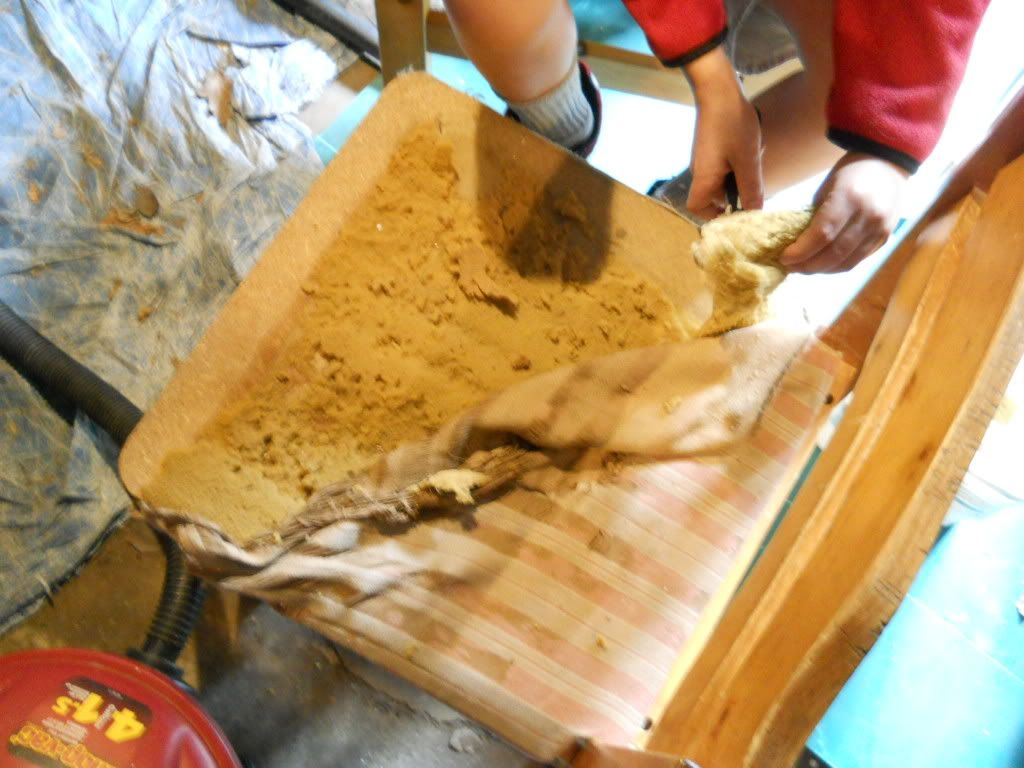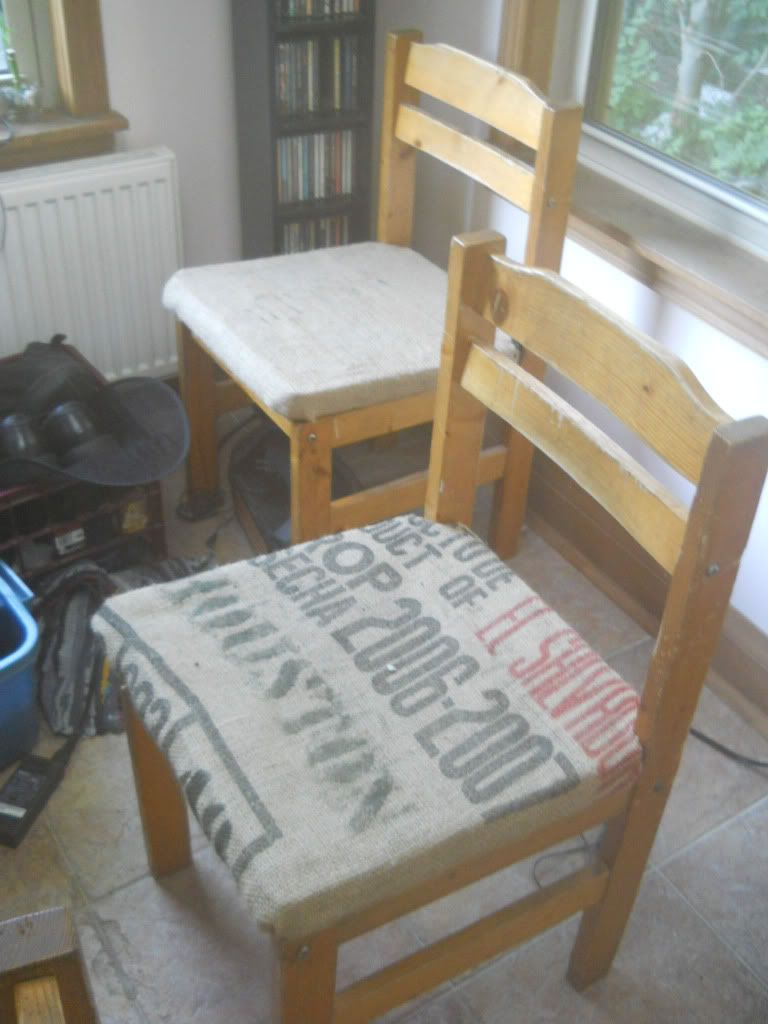 |
| Wave factor five, Captain. Setting winches to "fabulous!" |
I am currently involved in a mostly civil debate on the merits or lack of merits in integration of the autopilot and the GPS/plotter aboard the modern cruiser. I suppose not supporting integration is to implicitly support segregation. Thus are my views on human society and boat operation different.
For the uninitiated, a modern chain or hydraulic-type autopilot (AP) steers the boat using parameters derived from some sort of compass (usually a fluxgate type capable of sending data). One figures out from a chart or a chartplotter or a visual bearing to a landmark one's desired course, say 270 M or due West (magnetic). Assuming the wind is with you (or the motor works if no wind is for you), the boat goes more or less due West. Eventually, and assuming you are keeping a proper watch, you should be where you intended, realizing of course that you can't likely go on AP straight into your dock; at a prudent distance you will have to hand-steer as traffic increases and land draws near. Land kills more boats, generally, than the sea. Watch out for it, kids.
Now, if you dial in 270 and end up where 260 would have put you, Something's Going On. It could be a tidal effect, a current, leftover sloppy waves pushing the boat off, or maybe your gear isn't precisely calibrated or you are reading True instead of Magnetic or vice-versa. Your job is to find out why. The AP working as it should has revealed an anomaly to you, and Your Brain, Eyes and Hands can rectify this unscheduled detour.
By contrast, slaving the GPS to the AP means the AP steers to a waypoint selected by the skipper (I almost wrote "the operator"). The waypoint (WP) is a designated lat/lon often selected because it's proximate to a nav aid like a big shiny buoy, something even the newest sailor might recognize. The current doesn't matter, the waves on the beam are irrelevant...the AP will auto-correct and will steer unerringly to the designated point. Very nice.
And yet...
If the wind shifts, you could gybe as the GPS instructs the AP to turn "more to starboard!" If the wind dies, the GPS could lose "lock" because they do not do well in the lower half of boat speeds (sub 3 knots SOG, in my experience). This could cause radical steering corrections. Also, one wouldn't wish the MFD (multifunction display) to go wonky, or not to have a separate control panel for the AP. But that is the way some of the newer systems are set up: black boxes and leads going to a display unit or the "master black box".
For the insider's view on how getting gadgets to play together nicely can be a chore and then some, I refer you to The Marine Installer's Rant blog. Aspiring boat rebuilders can learn a lot from this guy.
The systems I am envisioning for Alchemy are stand-alone AIS, RADAR, depthfinder and autopilot, all of which can have their displays or their numerical values going to a PC-based solution. I am encouraged testing out cheapish, low-draw "netbooks" running OpenCPN, although I wouldn't object to running something like Rose Compass or others if they were a better choice.
That is key to understand here: it's not a money issue...well, not entirely. I would buy the best solution if I thought it was the best solution, but to me, that solution is about flexibility and redundancy, not necessarily centralized control and monitoring.
As we have a pilothouse, I intend only to have a cheap weatherproof plotter outside as a sort of slave display/backup; the real setup will be, I hope, largely out of the weather. Because I have easy and immediate access to the engines and tankage, the sort of "command center" console displays found on the flybridges of million-dollar fishing boats is of limited interest to me, as is the ability to know at the tap of a finger the exact RPM of the engine or the internal temperature of the alternators. "Integration", where I set the AP to sail to a GPS-determined waypoint, would be possible, and desirable, if I was in an open ocean current, for instance, and wanted to motor with the least amount of leeway made, but generally I would prefer to "steer to wind" or just trim properly to make the AP work the least.
My contention in the online forum I'm on is that integration, while a boon to, say, the single-hander who is presumably an excellent mariner to begin with, puts the unlearned or inexperienced sailor in the position of having several sources of information appearing in a realistic format, but which itself is only a representation of an idealized chart, and not necessarily what's in front of the boat.
Here's a "clip" from today's discussion:
Poster ColemJ said: Again, seamanship and good practices have NOTHING to do with electronics, autopilots or how they are integrated. Nothing.
I am not meaning to be argumentative or personal with you Alchemy, it is just that I remain confused and confounded why the seamanship argument keeps being made.
To which I replied: Integrated electronics allow stupid people to look smart until they hit something easily avoided, perhaps killing themselves or others in the process.
Integrated electronics are part of the process of turning a skipper into a "passenger".
Integrated electronics also discourage a stupid person, or rather an ignorant person, from educating themselves into competency. A boat with a tiller and a compass and a Windex and maybe a VHF (90% of boats until maybe 15 years ago) is a relatively mute thing. It gives you messages in ways by which you can't help but notice the nuances of wind, waves and weather. The "Star Trek" helm, by contrast, will allow even a near-blind child to steer the boat, but that child will not necessarily learn anything in the process.
So I am not impugning the skilled and seamanlike sailor for whom integration is a convenience only and is merely an extension to the existing and familiar boat operation aids, but I will and do impugn the growing number of boaters who rely on such gadgets because they know very little seamanship.
Those people are trouble for the sport/lifestyle, trouble for the SAR and a bonanza for those who know how to fix boats. We get reports here and elsewhere about sailboats calling MAYDAYs because they've run out of fuel, or going out without doing a weather check, or running into nav aids because waypoints weren't understood, or being unable to dock because the bow thruster's busted and they have a boat with grotesque windage.
Like the stories of people dying in the wilderness because "the GPS told them to go this way", individuals, to paraphrase Franklin, who give up their autonomy in order to secure a little convenience deserve neither.
See, told you I'd gotten ornery! Half the guys who taught me how to break down engines and do CN are already dead of old age, and the number of bozos at the helm continues to be high where I live. These days, it's bozos texting on smart phones as they enter basins. I use the ship's horn more than I used to, just to pry their eyeballs up from the glowing screens.
Sailing should be learned in electronics-free boats, in my view. Once you understand on a visceral and seamanlike level which aspect of boat operation the electronics mimic ...and the limitations of that mimicry...fine, go nuts, turn the helm into Mission Control. If you know how to sail safely, it's no matter to me. But I find that is not always the case, and guys in driveways seen fixing their own cars have just about vanished from North America. As has in some respects the experiential method of acquiring seamanship via, you know, actually sailing by hand and eye.
Colemj said: Yes! In fact, that's how we use ours 80% of the time (non-integrated - simply steer to compass). I am just having problems with the conflation of lack of seamanship and integrated systems.
I replied : I think we are essentially discussing the same thing from two ends. You are advocating the use of integration as just another tool available to the already skilled seaman, and I am saying that integration aids and abets the presence of underskilled skippers and crew and unseamanlike behaviour in conditions that can turn unpleasant rapidly.
The fact is that I've used integration of the "patch it in as needed" type myself...and liked it. But I have also seen it break, as I've seen windvanes and AP break offshore. Stuff happens: Seamen know how to get back to basics because they've experienced such basics. It seems of late, however, that people are dying or requiring rescue because their electronics-laden boats break in the real ocean, and they have no knowledge base from which to extract themselves from danger or distress.
 |
| I can see everything except the argument for slaving the AP to the GPS. |
| Not seen: Mark I eyeball |
I'm not convinced further automation of the sailing experience will encourage that tendency. One might as well take the bus...or become a jet pilot. I'm no Luddite, but if stuff breaks at sea...and it does, without exception...why make life harder by putting all one's nav aid/boat operation eggs in one basket? If I had a little boat going distances, I would probably for reasons of space and power opt for the all-in-one MFD, all-singing and dancing solutions...and it would probably be Furuno with Maretron black boxes...but for the moment, I would rather have stuff I can use when needed and "integrate" on an ad hoc basis.
Of course, even older electronics with life (and the benefits of long familiarity) still left in them exist and are capable of a form of integration.. While I will be getting new instruments before we depart, I have resisted the urge to buy "integrated packages", slick as many seem. I still prefer to have stand-alone instrumentation (particularly radar and depth) that can work alone, OR can "report" to a PC or tablet to exhibit integration when desired and as described. I find the idea of a multi-function display (which, if it "goes down", leaves one staring at a bunch of mute black boxes) a little absurd: I find it akin to telling an orchestra member they have to wear several headphone sets from each section of the pit in order to figure out where they are in the score. Better (from my point of view) to maintain more discrete displays and to integrate them wirelessly or via multiplexed connectors. But realistically, except for the very useful "radar over plotter" display (charting errors immediately manifest!), how often does a skipper do more than glance at depth, course and RADAR indicators before going back to Eyeball Mk. 1? If I had all the bells and whistles going, I might be tempted to stare overlong at some of the "overly comprehensive" displays available at reasonable costs these days...which I find not very seamanlike. I will take "a watch augmented", but disdain "a watch once removed".


















